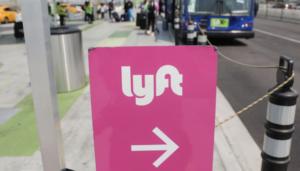Lyft Releases Safety Report and New Measures: Are They Enough?

On October 21, 2021, Lyft released its long-awaited Community Safety Report that “details the frequency of the most serious safety incidents” and outlines policies designed to protect riders and drivers alike.
According to the report, the ridesharing platform received 4,158 reports of sexual assault between 2017 and 2019. During those three years, the company said there were 360 reports of rape and ten deaths by physical abuse.
Fifty-two percent of riders reported sexual assaults, while 38 percent of drivers made reports, the report reads. The remaining 10 percent were made by third parties, which included “law enforcement officials, regulators, family, friends or the media.”
While the company claims the rate of sexual assaults has decreased by 19 percent over those three years, Lyft acknowledges the true number of assaults is likely underestimated, given assaults are not always reported.
Lyft’s report comes nearly three years after the company pledged to publish a sexual assault report in response to Uber’s 2018 announcement stating it collected more than 3,000 sexual assault reports. Lyft—which had previously represented itself as the socially aware alternative to Uber—has since faced a barrage of scrutiny for its mishandling of sexual assault reports.
Understanding Lyft’s safety report requires an orientation into the problems facing riders, as well as the solutions they’re pushing for.
The Problem: A Landscape of Unmitigated Abuse
Ineffective background searches, failures to remove abusive drivers, and the absence of meaningful support after reporting assaults drove dozens of victims to file lawsuits against Lyft.
One activist, who claims she was kidnapped and raped by her Lyft driver, says after she reported the assault, the driver remained on the app, and Lyft still made her pay for the ride.
Another woman says that after she reported the abuse, Lyft responded: “We’re sorry for the inconvenient ride—we hope your next ride is better.”
Not only do these accounts showcase how dismissed victims feel after reporting abuse, these instances underscore the challenges riders face both during and after their ride. Accordingly, Lyft’s enumeration of its safety policies is organized in three stages: before the ride, during the ride, and after the ride.
Before the Ride
Before drivers are cleared to pick up riders, Lyft says it conducts background checks on applicants, which is later followed by annual checks and continuous monitoring that alerts them of any new offenses or convictions.
In addition to monitoring, Lyft also requires drivers to complete a community safety education course that covers respecting boundaries, defusing uncomfortable situations, and how to report incidents to Lyft.
While training is a step forward, they do nothing to stop drivers who already intend to abuse their passengers. Alternatively, survivors call for more proactive measures like audio or visual recordings of drivers in cars to deter misconduct, or fingerprint-based background checks to avoid use of fake identities.
During the Ride
In its report, Lyft says riders can share their location with others and connect with ADT security during uncomfortable situations. Lyft also checks in with riders when a ride seems to veer off path or has stopped for too long.
While this approach appears to increase transparency, it places the responsibility of safety on the riders and their loved ones. With Lyft’s measures, it is on the rider and the ones they “share” their trips with to monitor the driver’s behavior and report any mishaps.
This idea is evidenced in much of Lyft’s language surrounding safety and reporting. On its site, Lyft implores its “travelers” to “become the best kind of stranger.” In describing its safety tools, language like “know who’s picking you up” and “get emergency help” read like a self-help guide rather than a promise to support and protect.
Preventing sexual violence goes beyond empowering individuals and their loved ones to be more vigilant and active; trainings and transparent reporting alone is insufficient in preventing harm. Solutions require companies like Lyft to address their role in a system that often complicates victims’ path to recovery and redress.
After the Ride
Once a ride has ended, Lyft says it hides passenger information from the driver and allows the passenger to report anything they think Lyft should investigate. Further, Lyft says it also provides mental health support to riders, as well as resources for reporting incidents to law enforcement.
However, this support wasn’t always available, according to lawsuits filed against Lyft in the last few years. In addition to treating victims dismissively, some victims have accused the company of trying to silence them.
In December 2020, 19 women sued the company for working to hide, ignore, and dismiss their complaints. Other victims took to Twitter to share Lyft’s responses to their reports, including a $5 credit.
These responses, paired with Lyft’s burden-shifting language, suggest riders carry additional responsibilities throughout each part of their journey with Lyft, as if they’re on this journey alone.
